Attack-minded Belgium finds way through USA, defiant Tim Howard

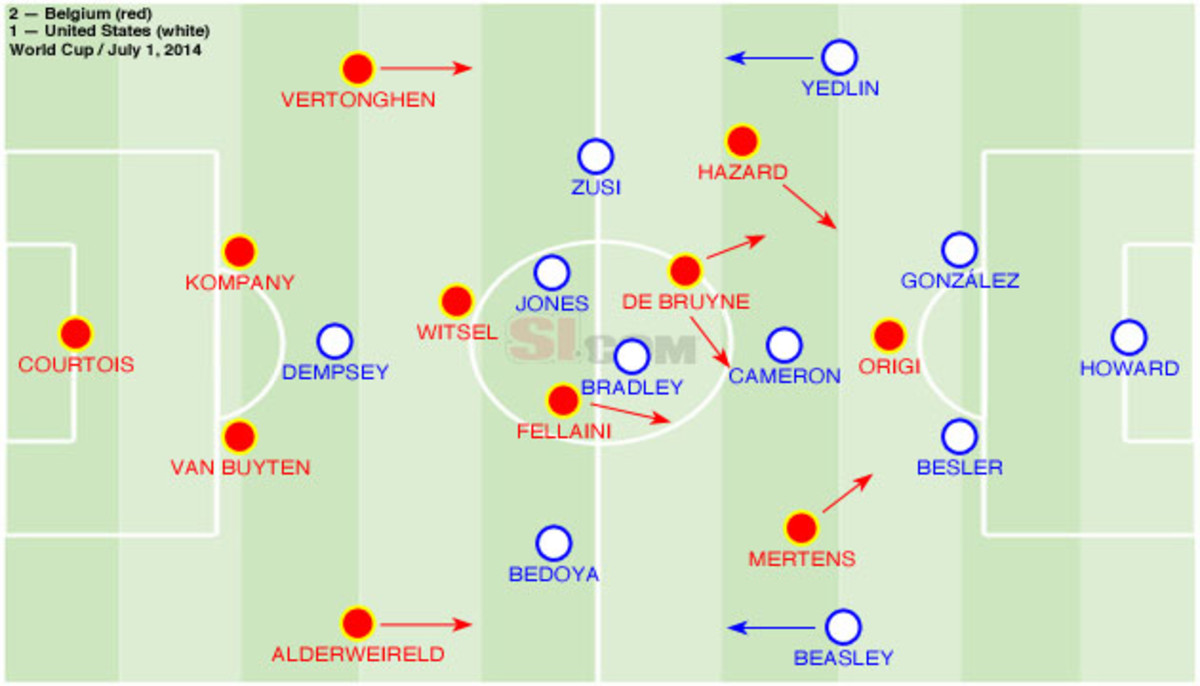
It looked chaotic at times, and playing an extra 30 minutes wasn’t in the plan, but Belgium’s 2-1 win over the United States on Tuesday went about as Belgian manager Marc Wilmots scripted it. Belgium still hasn’t scored a goal this World Cup before the 70th minute, but the Red Devils were still the best team across 120 minutes of play.
Both teams fielded fairly attack-minded lineups, with the U.S. playing 4-1-4-1 for the first time in the tournament. Belgium stuck with its usual 4-3-3, and all 10 field players had their moments in attack, including center back Vincent Kompany, who dribbled the length of the pitch in the 90th minute and turned it into a scoring opportunity.
As in all three previous matches, Belgium played the first half at jogging pace, breaking forward periodically when the best opportunities arose and chalking up nine shots. In the second half, particularly the last 20 minutes, Wilmots loosened the reins, and 22 shots flew toward the U.S. goal.
End of the Road: USA's World Cup run ends with dramatic loss to Belgium
American goalkeeper Tim Howard had to be at the top of his game for the U.S. to have any chance, and he kept the match scoreless for 90 minutes while the players in front of him failed to stymie attacks from left, right and center. Besides one unnecessary camera save, Howard’s technique was impeccable, and he had nearly a perfect performance.
The biggest improvement in Howard’s game over the past year has been in his ability to play with his feet. New Everton manager Roberto Martínez instilled a possession-based philosophy to which Howard has adapted admirably. On Tuesday, he only failed two pass attempts.
On the attacking side, the U.S. looked to be in trouble when Fabian Johnson went down in the first half with a hamstring injury. Johnson had been consistently the U.S.’s best attacker, overlapping on the right flank, particularly against Ghana and Portugal; however, 20-year-old DeAndre Yedlin played the best game of his short professional career off the bench.
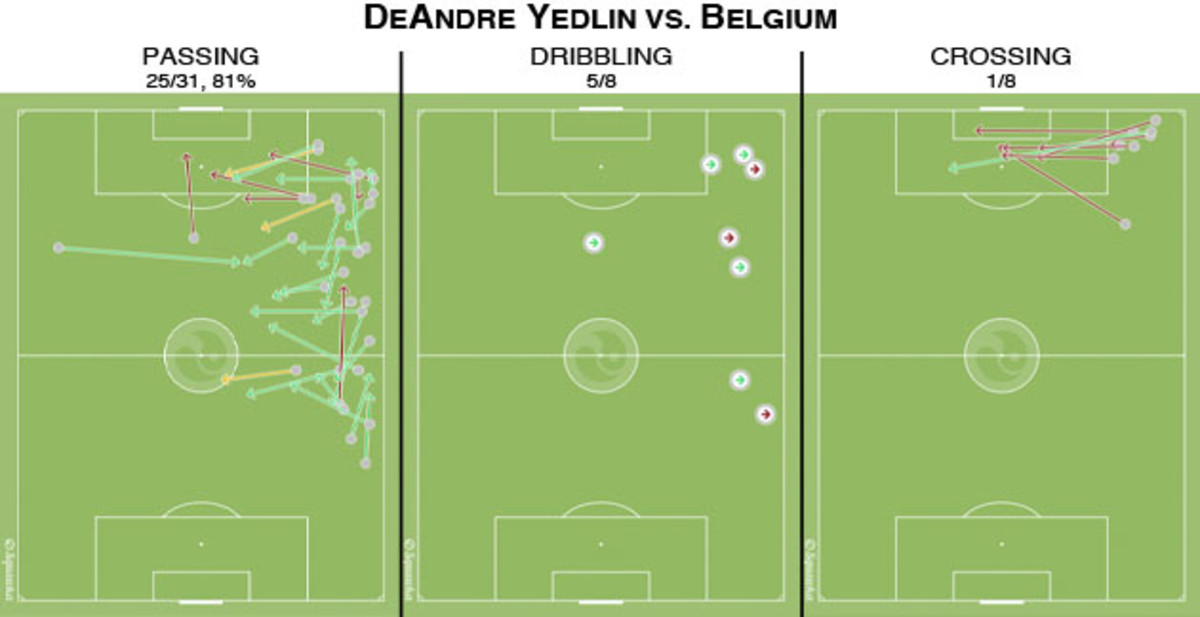
He completed 81 percent of his passes, five of eight 1-on-1 dribbling attempts and stayed strong on the defensive end, winning both of his aerial duels. U.S. manager Jurgen Klinsmann found a way to get the best out of Yedlin in two extended appearances, mostly by giving him freedom to run the right flank and asking teammates to cover for him defensively.
With Cameron in position to slide over and winger Graham Zusi pinned back farther than usual, it prevented any major gaps from being exposed when the fullback got forward. In the future, as Klinsmann used him against Portugal, the best move for Yedlin may be to play on the wing.
He showed good instincts with the ball at his feet, driving toward the endline and looking for the cutback ball. The final product needs some work — he completed just one of eight crosses — but letting Yedlin stay higher and wider without tracking back as far would accentuate his natural speed and likely result in a positive defensively by preventing the fullback on his side from overlapping as often.
Belgium scored both of its goals on the counter; the first was somewhat of a scramble in the penalty area, with Matt Besler getting a toe on Divock Origi’s cutback to Kevin De Bruyne, but De Bruyne was still able to regain possession and score.
The second goal was more egregious by the defenders than the first.
Down a goal, the U.S. threw numbers forward, including Yedlin. A giveaway in midfield led to De Bruyne streaking away down the left after a layoff from substitute striker Romelu Lukaku. Instead of recovering quickly to get proper body position, the defenders were slow to react and get behind the ball.
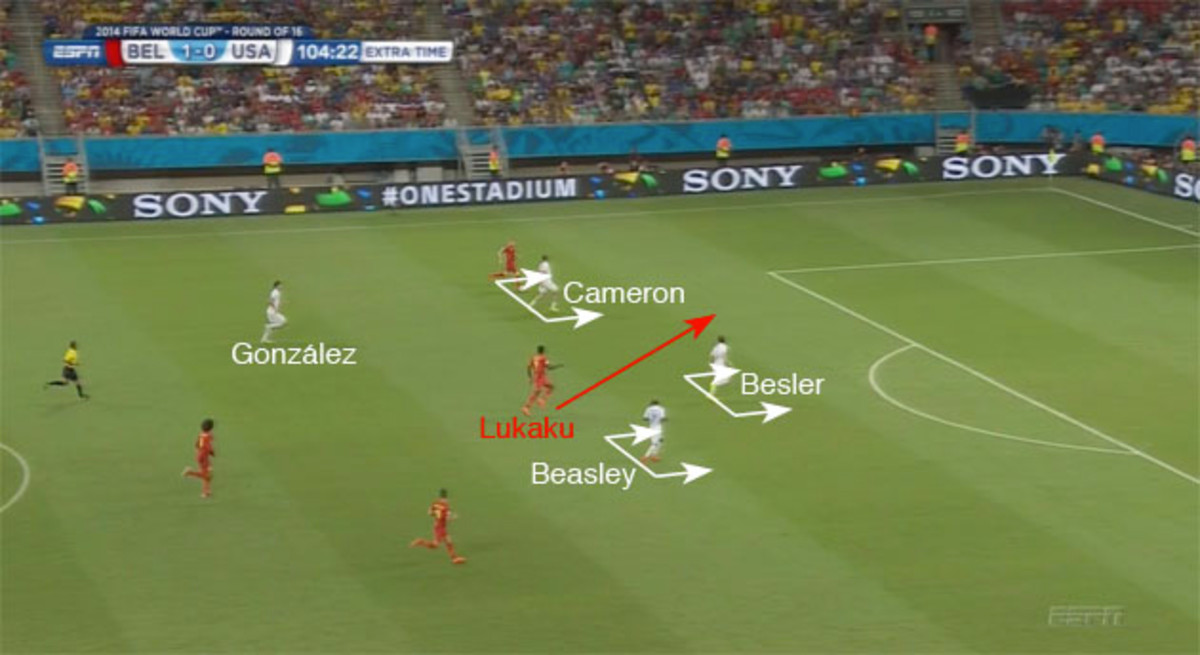
As a result, Cameron had to slide over to cover for González — who was slow shifting to his right all game — and Besler turned to run toward goal, facing away from the field. Lukaku ran behind him, cutting inside at the right moment. By that time, it was too late for Besler to adjust, as it was the first time he saw Lukaku running behind him due to his poor body shape, closed off to the field.
Lukaku’s run, a ghost run off the defender's shoulder, was a perfect example of forwards manipulating their direct opponents to open weaknesses. On the U.S. goal, wunderkind Julian Green did the same.
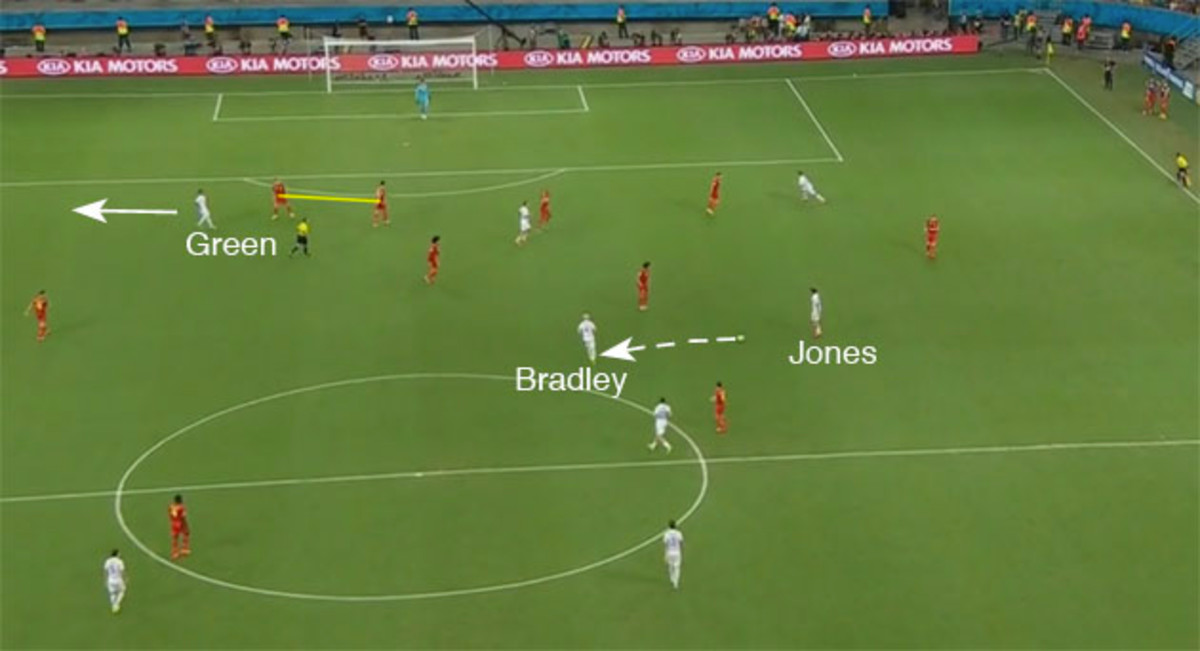
With the ball on the opposite side of the field, Green tucked in from his spot on the left wing. Seeing that Jermaine Jones’ best passing option was Michael Bradley in the middle, Green pulled wide to find space and, potentially, the ball.
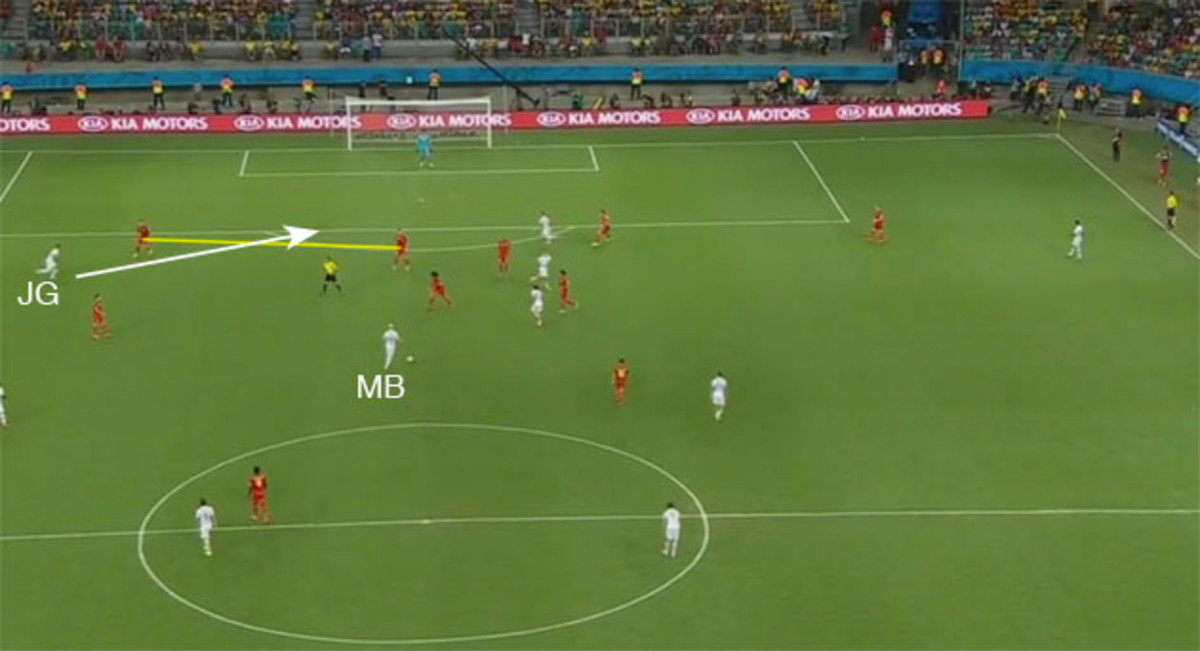
When he did, a gap opened between two defenders because his immediate opponent followed the run, but the back line didn’t shift as a unit. Green timed his slashing run into the gap perfectly, and Bradley chipped a ball in that was nearly an exact copy of his assist in the warm-up match against Turkey. The ball wasn’t perfect, but Green confidently finished with a side-volley on his first touch of the match.
USA transitions between eras in World Cup comeback effort vs. Belgium
It was a classic goal for a player used to Pep Guardiola’s system, in which wingers make central runs as often as they pull wide to dribble at defenders. (Bayern Munich’s usual wingers, Arjen Robben and Mario Götze, crisscross the central channel multiple times a match.) The smooth finish also belied a higher level of technical ability that would fit in well in a Champions League side.
In the coming weeks, U.S. Soccer officials, coaches, fans and media will examine the black box of the 2014 World Cup. One logical conclusion would be that youth served the U.S. well in Brazil. Yedlin and Green, the latter in extremely limited minutes, were impactful off the bench, once again making Americans hopeful for the future.
GALLERY: Shots from Belgium 2, USA 1
U.S. vs. Belgium
Belgium 2, U.S. 1
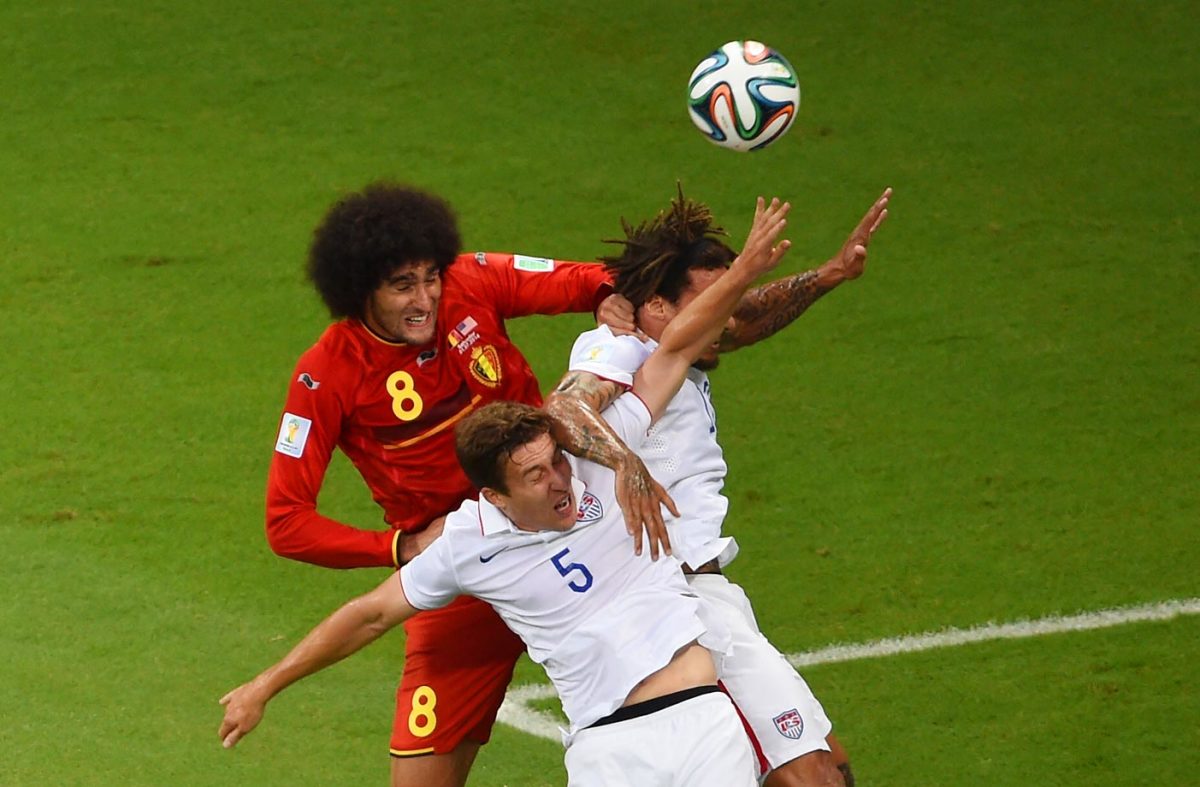
American teammates Matt Besler and Jermaine Jones challenge Belgium midfielder Marouane Fellaini in the first half.
Belgium 2, U.S. 1
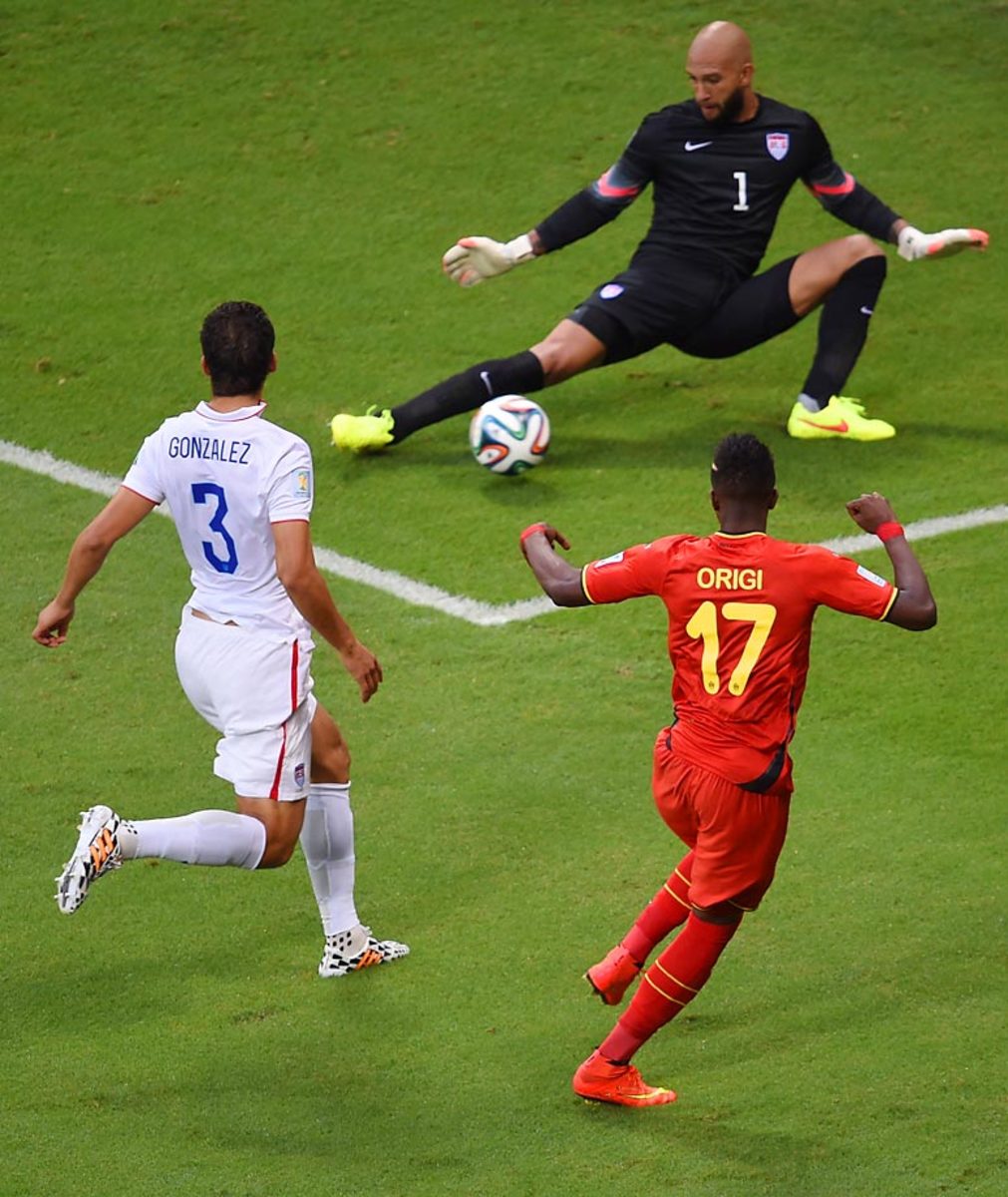
American goalkeeper Tim Howard is tested early on in the match against Belgium.
Belgium 2, U.S. 1
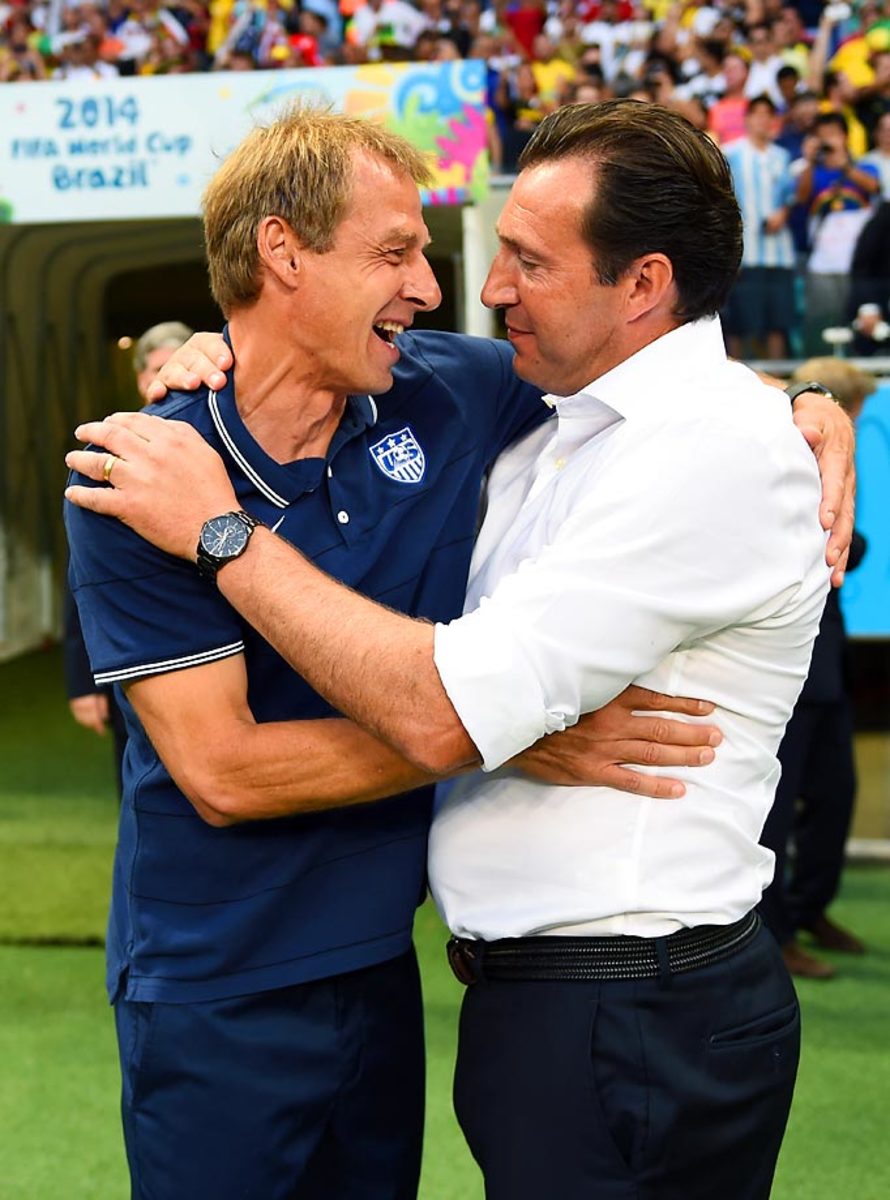
Head coaches Jurgen Klinsmann and Belgium's Marc Wilmots greet each other before kickoff.
Belgium 2, U.S. 1
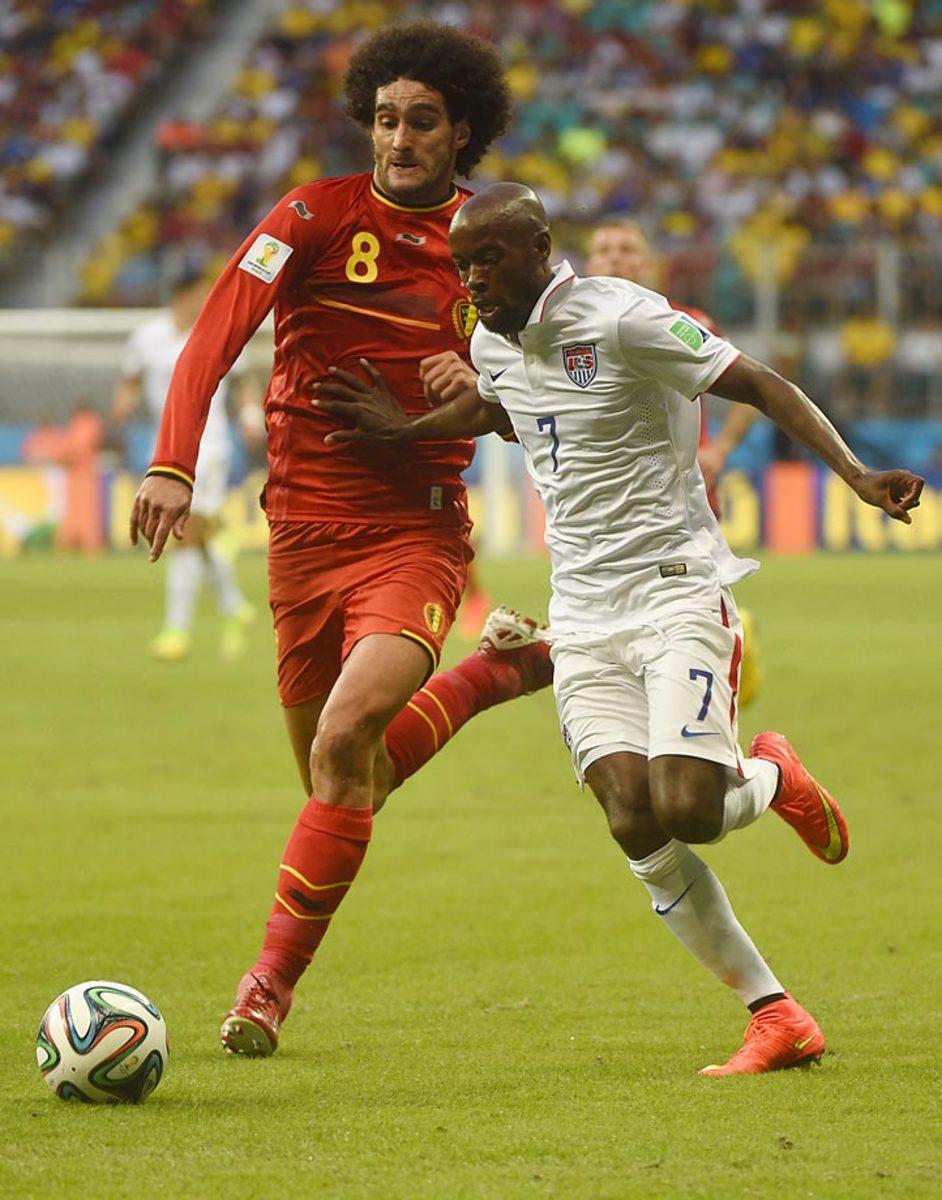
Belgium midfielder Marouane Fellaini and U.S. defender DaMarcus Beasley jockey for position as they chase after the ball.
Belgium 2, U.S. 1
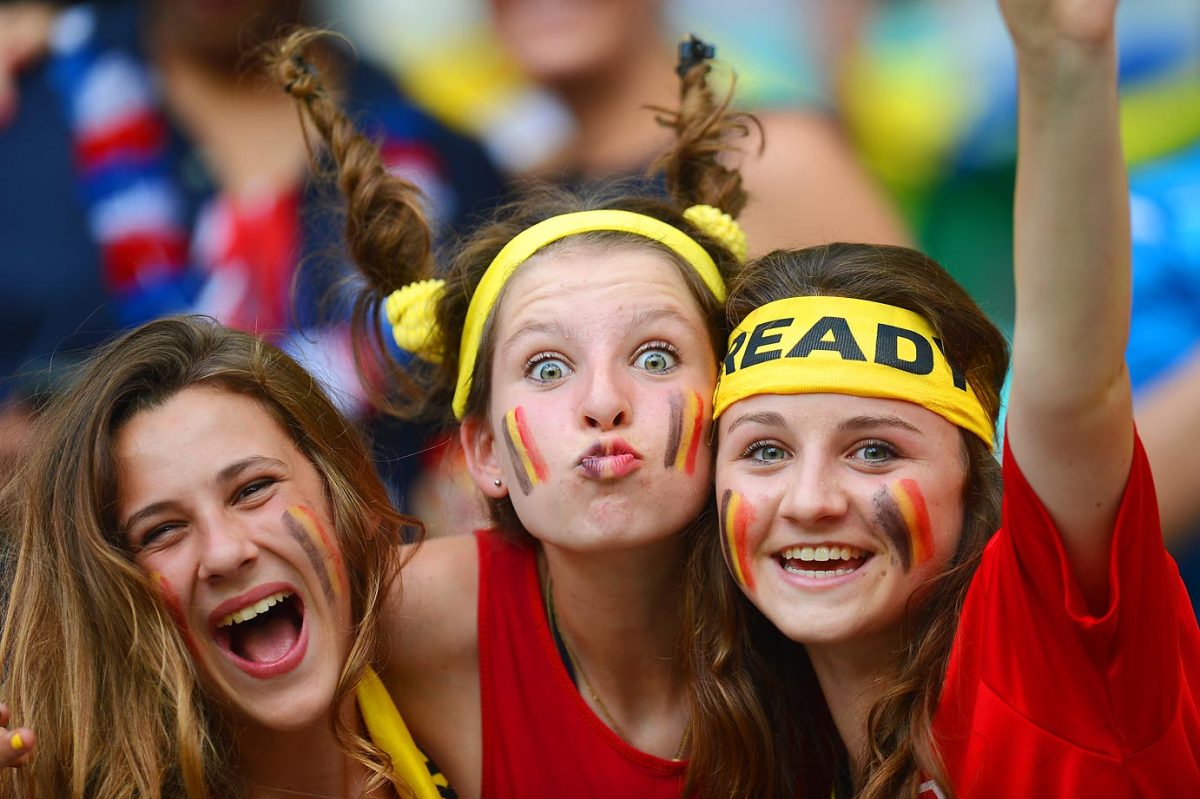
Belgium fans soak up the atmosphere prior to the game against the U.S.
Belgium 2, U.S. 1
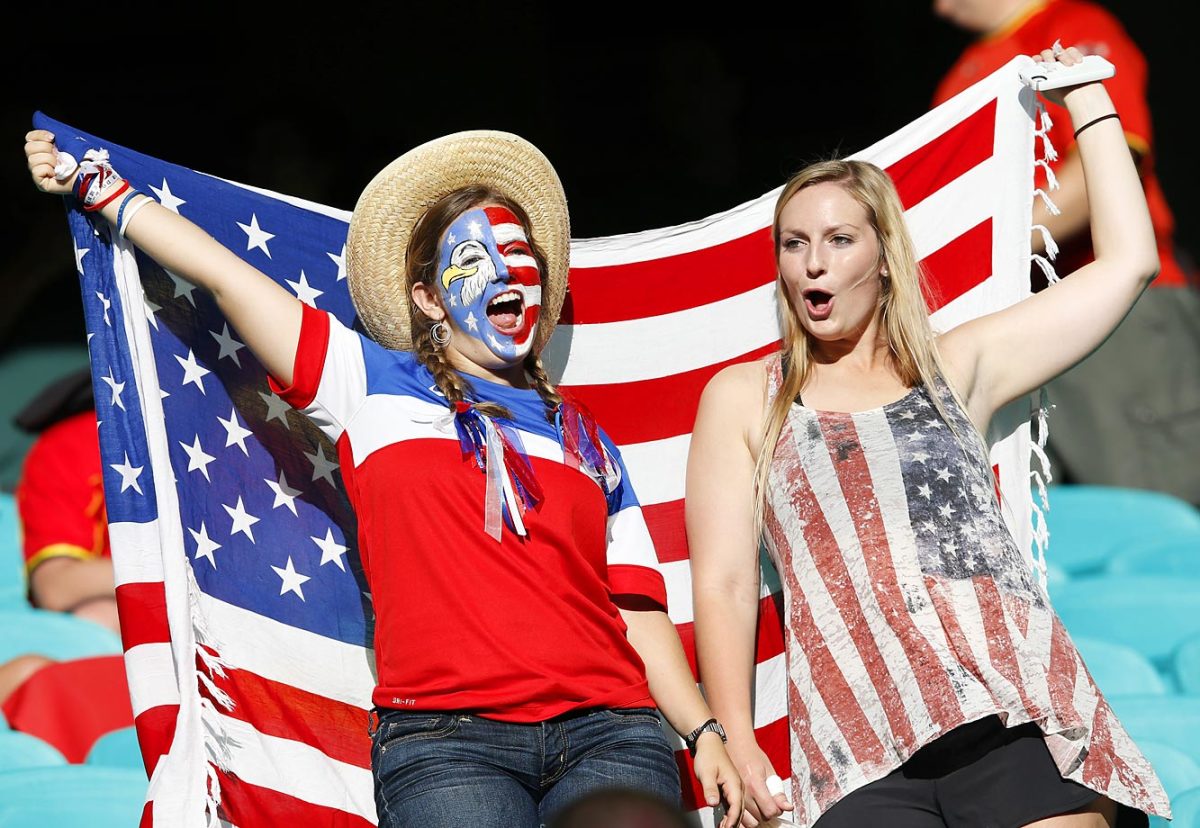
U.S. fans cheer during the game.
Belgium 2, U.S. 1
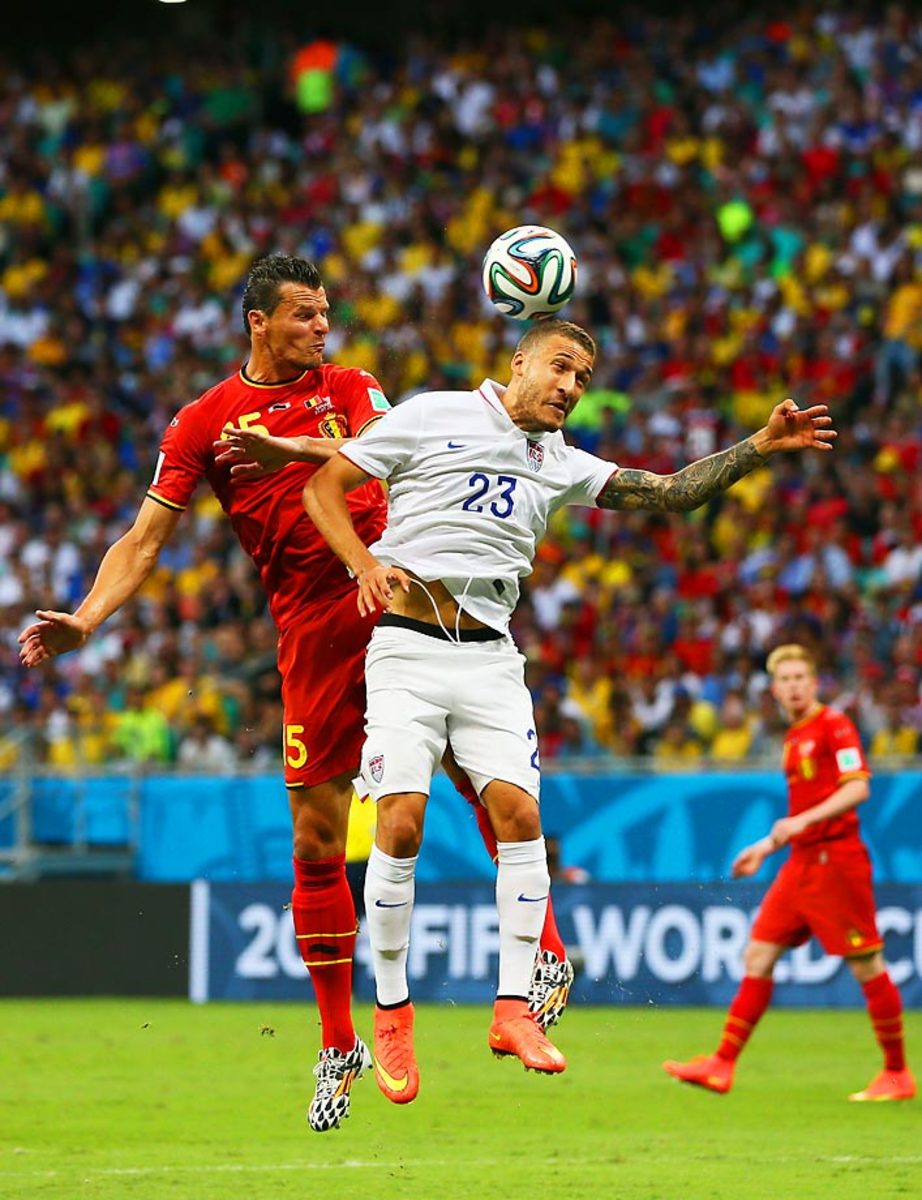
United States' Fabian Johnson and Belgium's Daniel Van Buyten go up for a header.
Belgium 2, U.S. 1
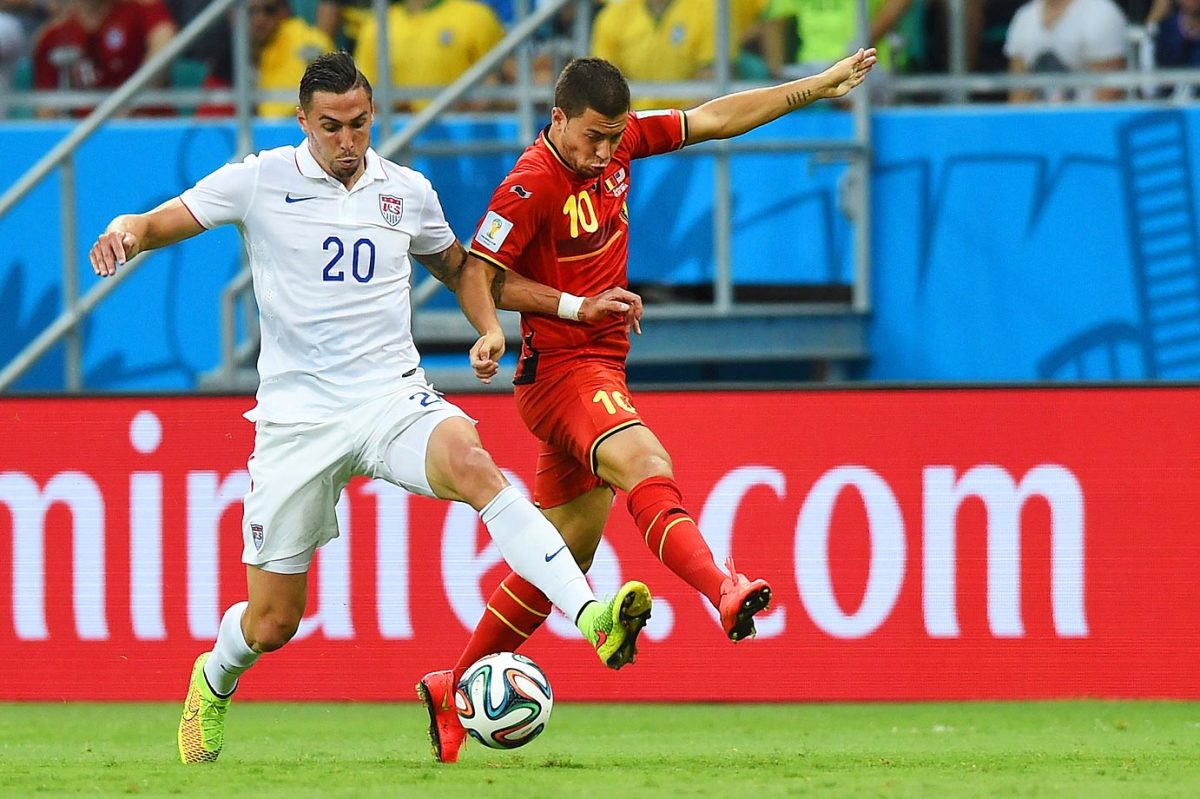
American defender Geoff Cameron tries to hold off Belgium's Eden Hazard.
Belgium 2, U.S. 1
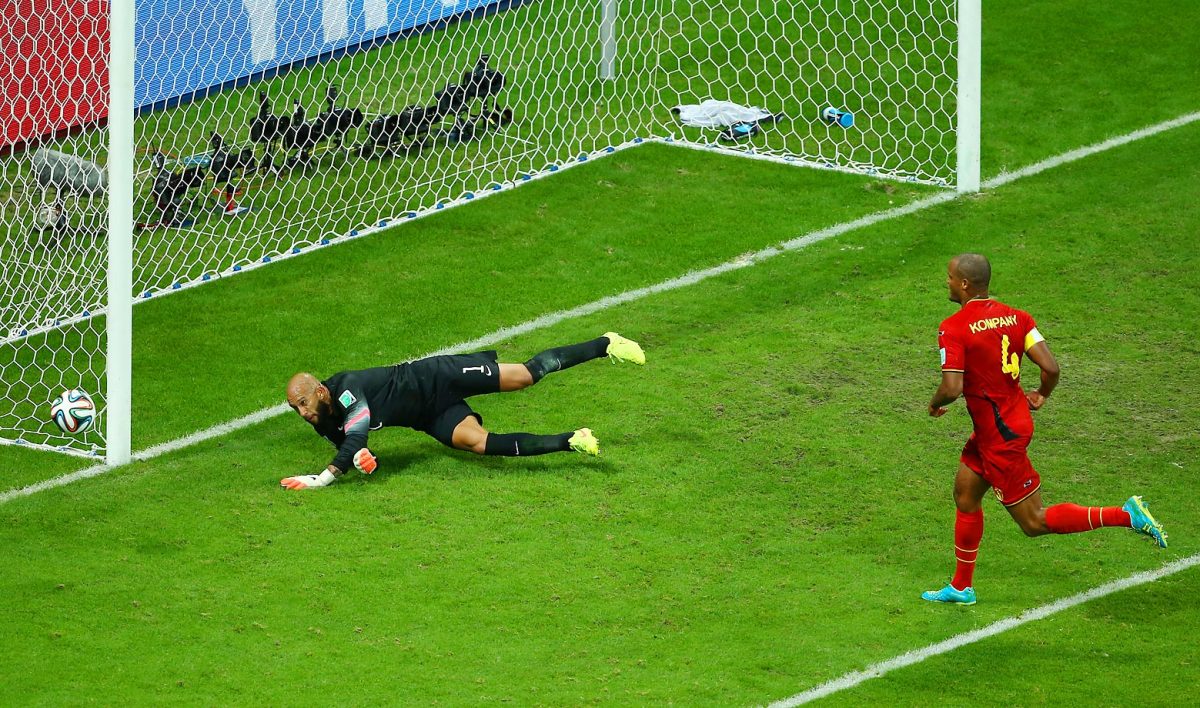
American goalie Tim Howard saves Belgian defender Vincent Kompany's shot in the second half.
Belgium 2, U.S. 1
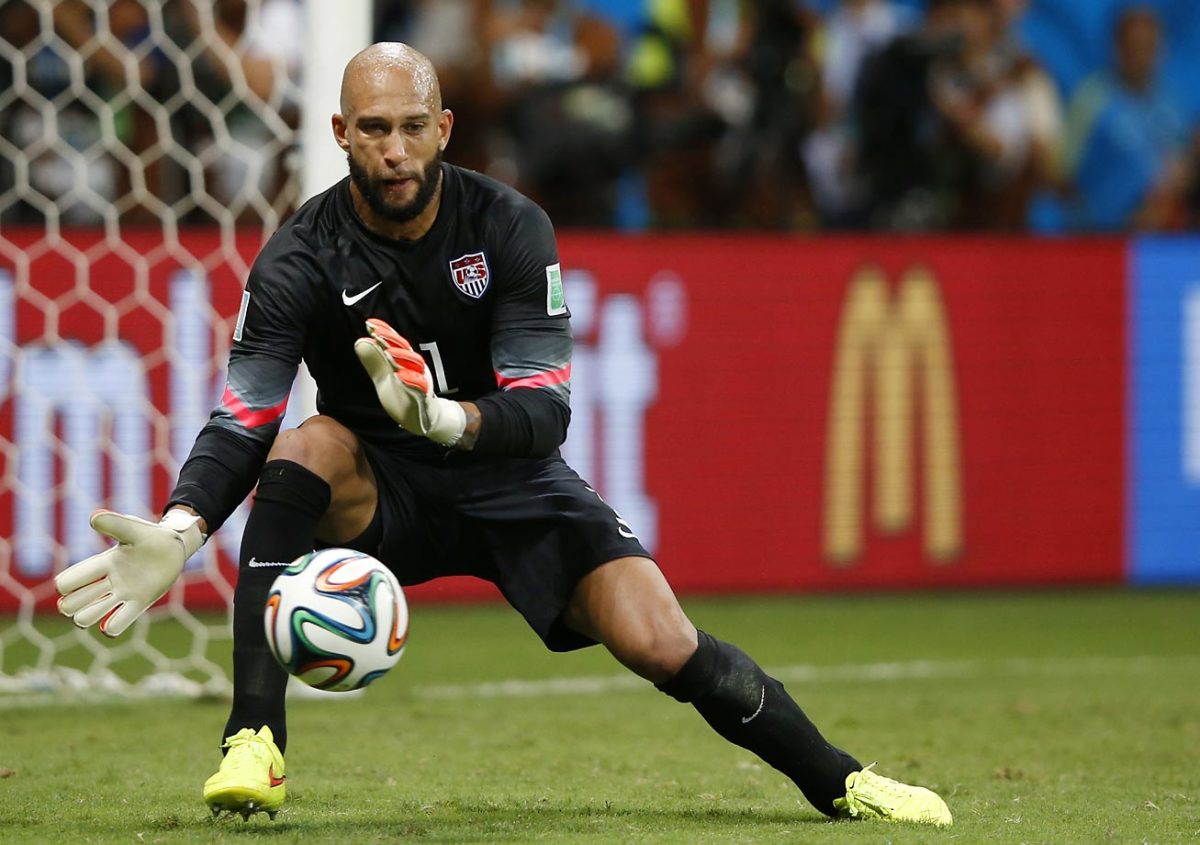
Tim Howard makes a save in extra time of the U.S.-Belgium Round of 16 match in the World Cup at Arena Fonte Nova in Salvador, Brazil. The American goalie made a total of 16 saves on the night, setting a new record for the most saves in recorded World Cup history.
Belgium 2, U.S. 1
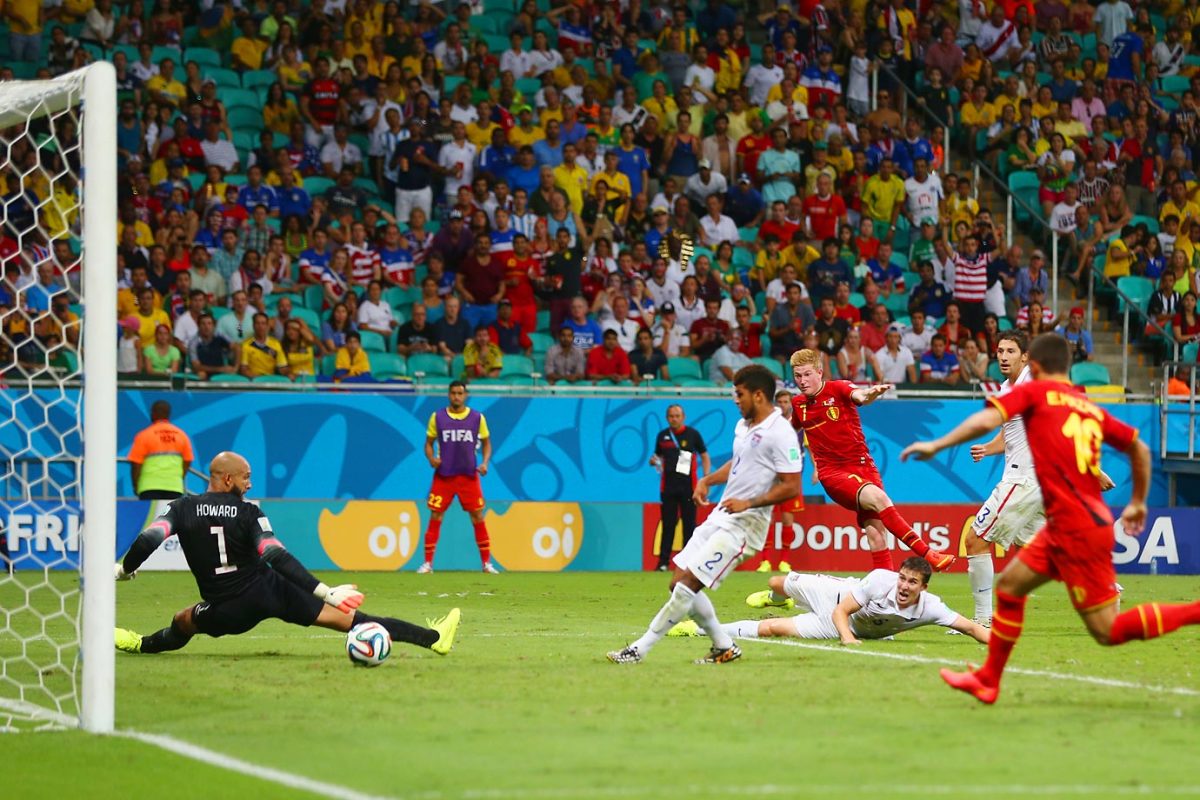
Belgian midfielder Kevin de Bruyne (#7) scores for his country in the first half of extra time, breaking the 0-0 deadlock.
Belgium 2, U.S. 1
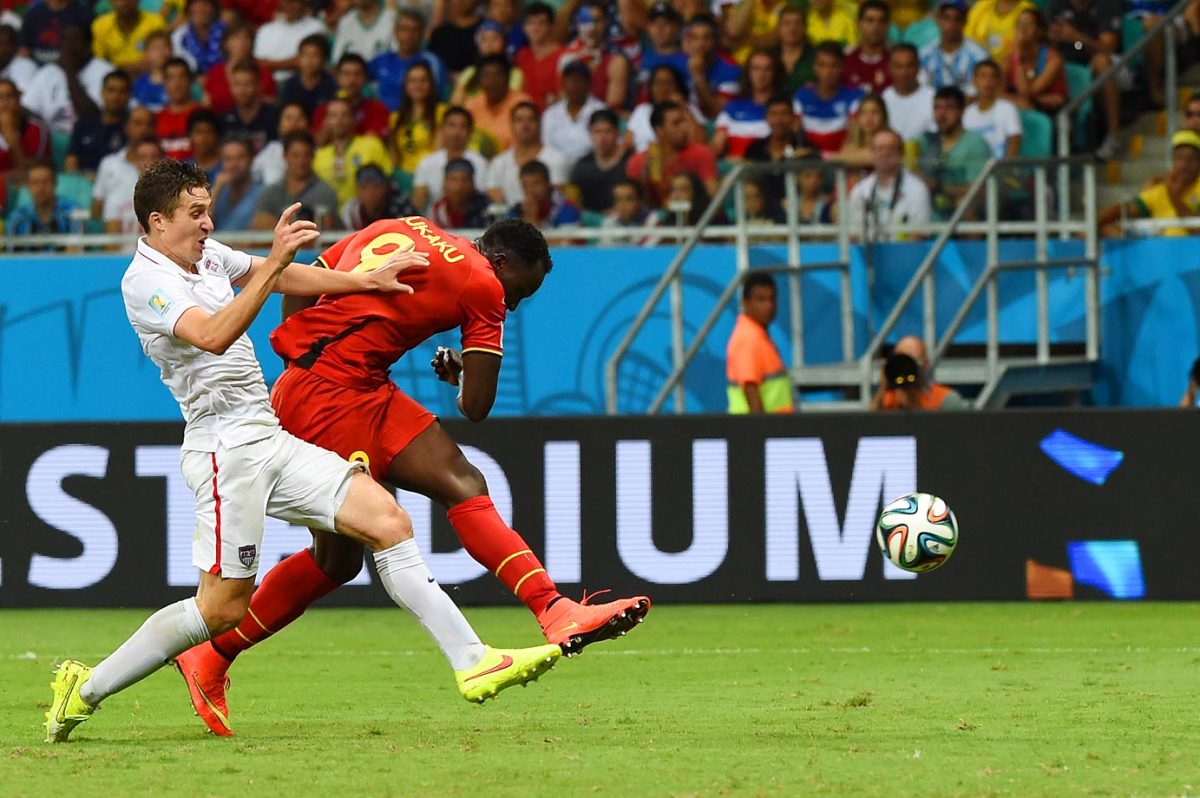
Belgium's Romelu Lukaku shoots and scores his country's second goal of extra time against the U.S.
Belgium 2, U.S. 1
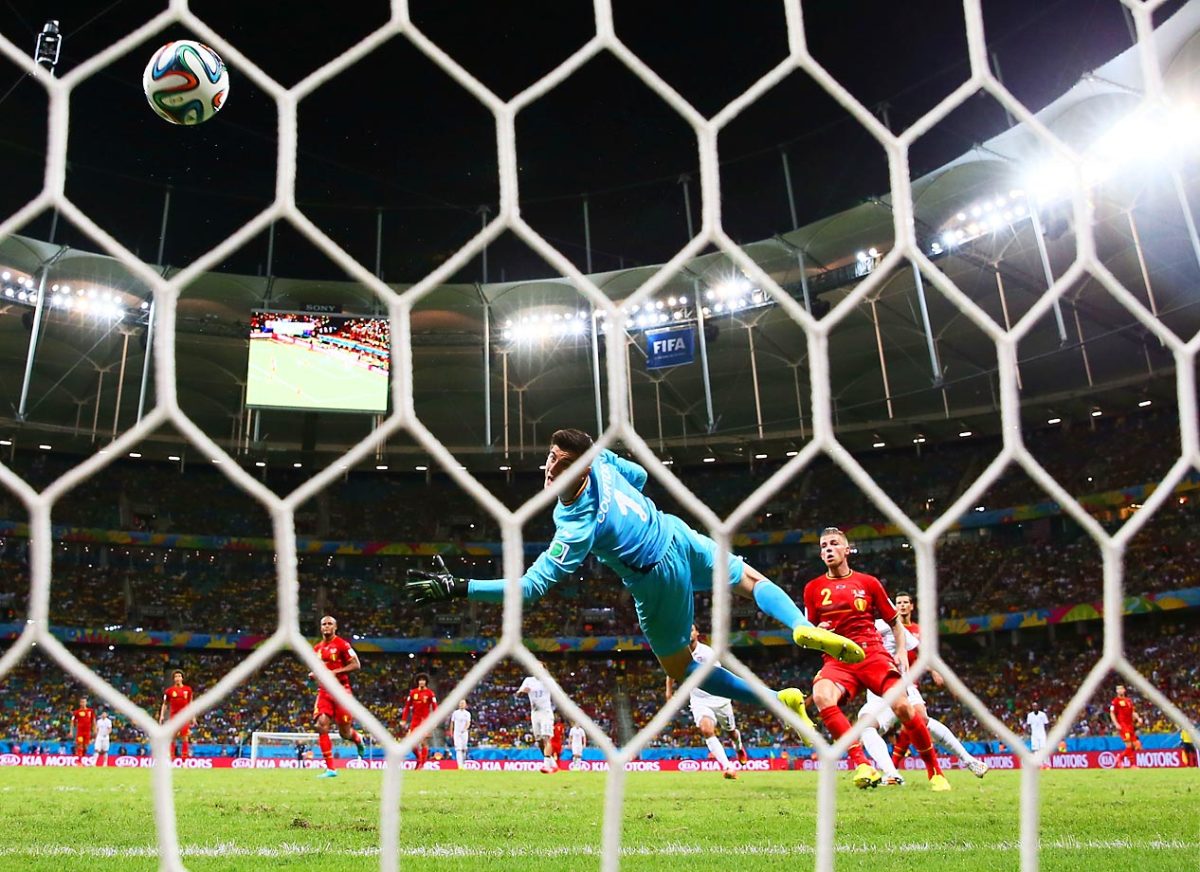
Belgian goalie Thibaut Courtois looks behind him as American substitute Julian Green's shot goes in to make the score 2-1.
Belgium 2, U.S. 1
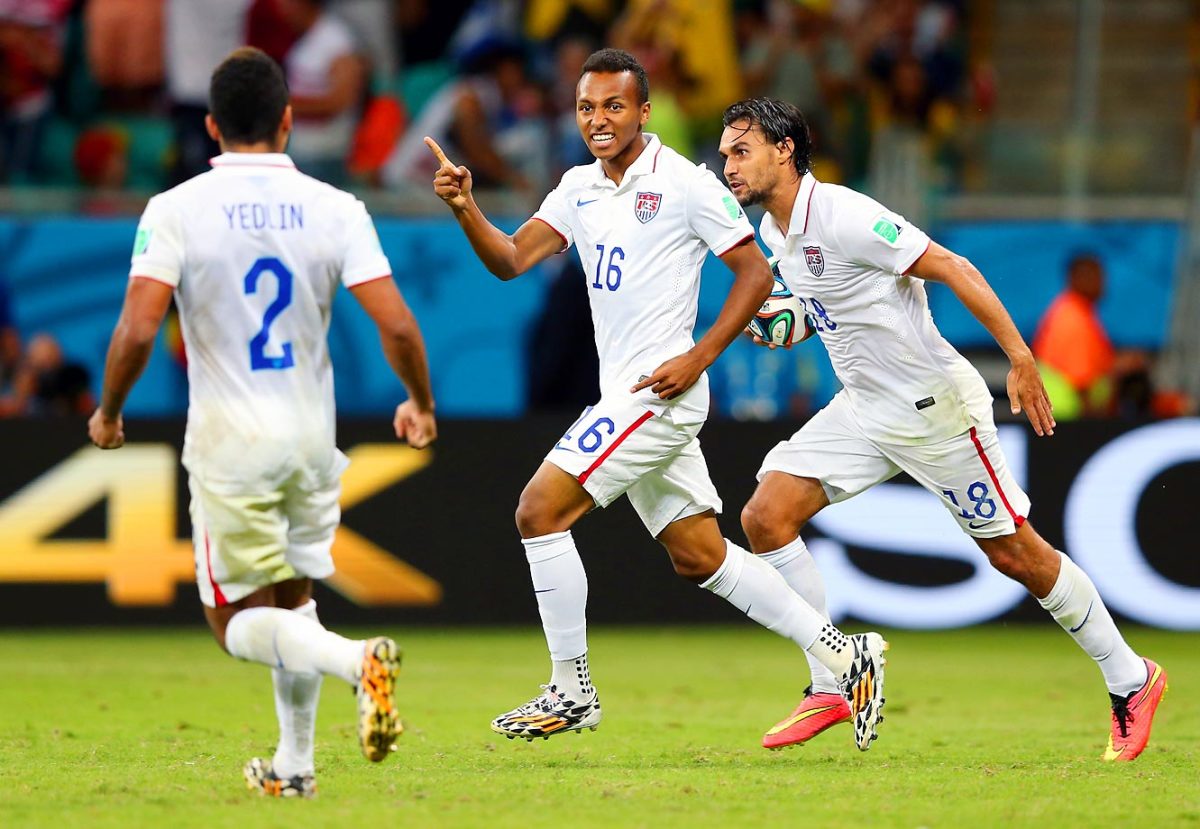
U.S. substitute Julian Green (#16) celebrates his extra time goal that made the score Belgium 2-1 United States. Unfortunately the U.S. couldn't capitalize on the momentum Green's goal created and eventually lost the game.
Belgium 2, U.S. 1
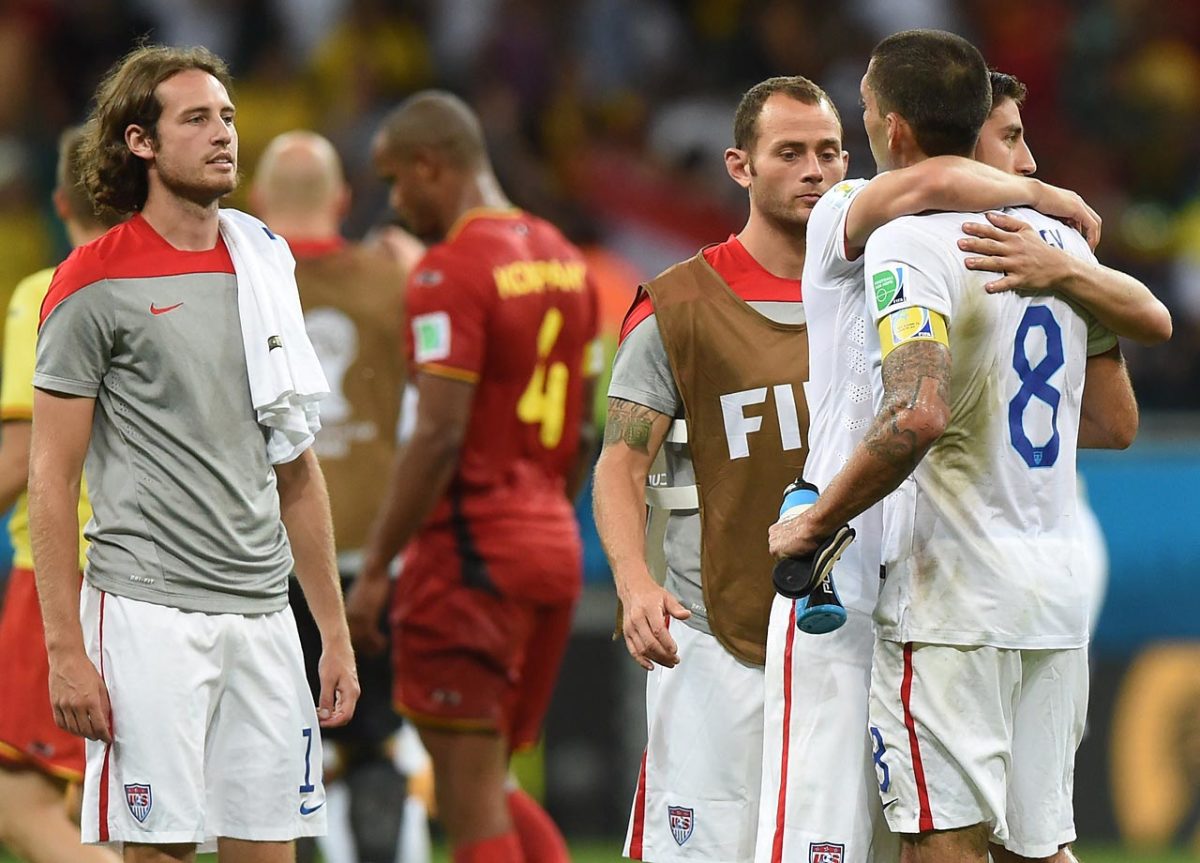
American players console each other after the loss while Belgian players celebrate in the background.
